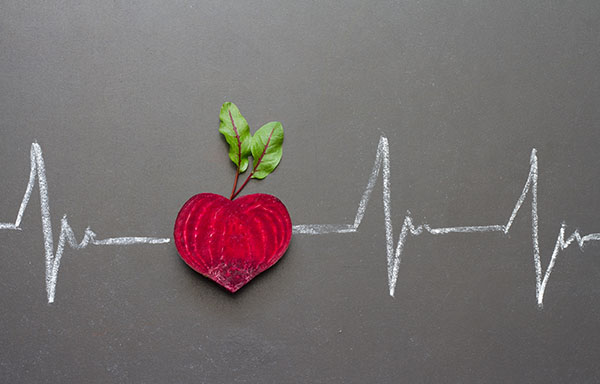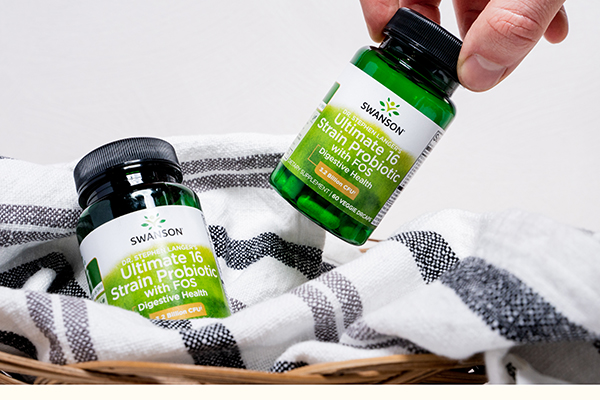The Top 34 High-Fiber Foods
Getting enough fiber in your diet is an important part of supporting overall wellness, and certainly a topic worth chewing on. Did you know, for example, that fiber contributes to cardiovascular health by supporting normal blood sugar and cholesterol maintenance?1 Fiber is also a source of nourishment for healthful probiotic microorganisms, which in turn provide us with digestive and even immune health benefits as part of a symbiotic relationship.2 Making sure we consume enough fiber in our diets is also a healthy way to maintain regularity and digestive comfort.3
And the best news is that getting enough fiber in our diets is easier, and tastier, than you may have thought! Nuts and seeds are great foods high in fiber, not to mention a crunchy boost to most any recipe. Flax seeds and chia seeds are especially good sources of fiber that can be added to things like oatmeal, smoothies, yogurt or even baked goods. You can also top your yogurt or salads with pecans or almonds for some added fiber.
If you’re a regular smoothie maker, try adding a handful of fresh, organic spinach to the blender. Or maybe some carrots, too! In fact, either can be chopped, grated or pureed and added to foods like homemade banana or zucchini bread, omelets or even sprinkled over a pizza. One more pro tip: finely chop cauliflower and use that in place of boring white rice. You’ll enjoy a change of texture, as well as a bit of added dietary fiber.
How much fiber do you need?
It’s important to discuss your individual health needs with your doctor, but in general, it is recommended that adults aim for about 25-30 g of fiber from food sources each day.4
Two types of dietary fiber (soluble vs insoluble)
Fiber never actually gets digested,5 and that’s precisely why it’s so beneficial to your body. There are two types, soluble and insoluble, but both pass through your system relatively unchanged.
The difference between the two is that soluble fiber turns into a gel-like substance after dissolving in water.3 This helps slow digestion so your body can absorb more nutrition from your food before passing it. Insoluble fiber does not turn into gel. Instead, it maintains its consistency to make solid waste heavier and softer so it can easily make its way through your intestines.3
What happens if you get too much (or too little)?
If you’re consuming too much fiber, there’s the possibility of experiencing bowel discomfort and even occasional constipation. One thing that can help is to make sure that you’re drinking plenty of water, as insoluble fiber soaks up water as it passes through the GI tract.3 This is beneficial because the absorption of water by the fiber softens the stool and eases its removal from the body so that it spends less time in the GI tract.
Irregularity, GI discomfort or loose stools are some of the primary things you may notice if you aren’t getting enough fiber in your diet. This is because fiber helps bulk up and solidify waste so that it more easily leaves the body.3 Try adding more fiber to your diet as a natural way to support elimination.
The bottom line is that fiber contributes wonderful health benefits, but like everything in life, it’s important to seek balance and only make slow, gentle changes to your habits in order to give your body time to adjust.
Top high-fiber foods
If you want to pump up the fiber content of your daily diet, there’s only one place to look: the plant kingdom. Plant products, specifically whole, unprocessed plant products, are where Mother Nature hides all her healthy soluble and insoluble fiber. Unfortunately, the standard American diet is high in processed grains, sugar and meat, all of which have little to no fiber content. If that sounds familiar, here are some of the best high-fiber foods that you can add to your diet right now:
Fruits that are high in fiber
- Raspberries
- Pears (with skin)
- Strawberries
- Apples (with skin)
- Bananas
- Oranges
Grains, Cereals and Pastas that are High in Fiber
- Barley
- Bran flakes
- Oat bran muffins
- Oatmeal (instant)
- Bran
- Popcorn (air-popped)
- Brown rice
- Whole-wheat pasta noodles
- Rye bread
- Whole-wheat bread
Legumes, Nuts and Seeds that are High in Fiber
- Split peas
- Sunflower kernels
- Lentils
- Chia seeds
- Black beans
- Lima beans
- Baked beans
- Almonds
- Pistachios
- Pecans
Vegetables that are High in Fiber
- Artichokes
- Green peas
- Broccoli
- Turnip greens
- Brussels sprouts
- Sweet corn
- Potatoes (with skin)
- Tomato paste
- Carrots
When diet isn't enough
Sometimes, making sure we get enough fiber from diet alone can be challenging, but the good news is that there are quality fiber supplements available which can benefit your digestive health while also contributing to a healthy weight management routine. From psyllium husks to apple pectin, you’re sure to find a digestive supplement that has just the support you’re looking for.
High-fiber foods are a great place to start on your journey to better digestive health, and with this list, there’s certainly a delicious option available for almost any taste or preference! Interested in learning more? Be sure to check out Understanding the Gut-Brain Connection and Top Reasons to Add Psyllium Husk Fiber to Your Diet.
You be well, now.
Swanson
*These statements have not been evaluated by the Food and Drug Administration. These products are not intended to diagnose, treat, cure, or prevent any disease.
Sources
- Fiber. CDC. Read source
- Dietary Fiber Intake and Gut Microbiota in Human Health. Microorganisms. Read source.
- Dietary Fiber: Essential for a Healthy Diet. Mayo Clinic. Read source.
- Increasing Fiber Intake. UCSF Health. Read source.
- Fiber. Harvard School of Public Health. Read source.



